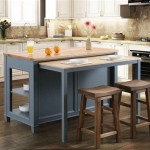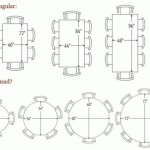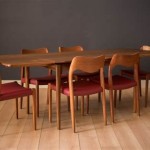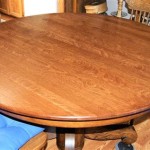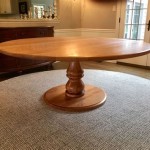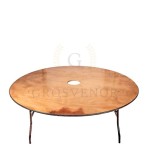Modern Extendable Dining Tables: Seating for Twelve
The modern extendable dining table designed to seat twelve individuals represents a significant investment in both functionality and aesthetics for the contemporary home. Such tables are engineered to accommodate large gatherings, seamlessly transitioning from everyday family dining to hosting sizable dinner parties. Understanding the nuances of design, materials, mechanics, and practical considerations is crucial before making a purchase.
The primary function of an extendable dining table is its adaptability. It offers a compact footprint for daily use, expanding to accommodate a larger group when needed. This versatility makes it a particularly attractive option for homeowners who frequently entertain but do not want a large table permanently occupying a substantial portion of their dining space. The design possibilities are extensive, ranging from minimalist styles to more ornate and decorative pieces. The "modern" aspect refers to the clean lines, contemporary materials, and innovative extension mechanisms that characterize these tables.
Key Point 1: Design and Material Considerations
The aesthetic appeal of a modern extendable dining table seating twelve hinges on both its design and the materials employed in its construction. Design considerations encompass the overall shape, leg style, edge detailing, and the visibility of the extension mechanism. Popular shapes include rectangular, oval, and boat-shaped designs. Rectangular tables tend to maximize seating capacity and provide a more formal appearance. Oval and boat-shaped options offer a softer aesthetic and facilitate conversation due to the curved edges.
Material selection significantly impacts the table's durability, maintenance requirements, and overall style. Common materials include hardwood, engineered wood (such as MDF or plywood), metal, glass, and stone. Hardwood, such as oak, maple, walnut, and ash, is prized for its strength, durability, and natural beauty. Solid hardwood tables are generally more expensive but can last for generations with proper care. Engineered wood offers a more affordable alternative, providing stability and resistance to warping, particularly when used in the table's core structure. A veneer of hardwood can then be applied to provide the desired aesthetic.
Metal accents, often stainless steel or powder-coated steel, can add a modern touch and enhance the table's structural integrity. Metal legs or frames provide a sleek, minimalist look. Glass tabletops are another option for modern designs, creating a sense of openness and lightness. However, glass can be prone to scratches and requires more frequent cleaning. Stone tabletops, such as marble or granite, offer a luxurious and durable surface, but they are also considerably heavier and more expensive.
The finish applied to the table surface is another critical design element. Options include lacquer, varnish, oil, and wax. Lacquer provides a durable, glossy finish that is resistant to scratches and stains. Varnish offers a similar level of protection but may have a slightly different sheen. Oil finishes penetrate the wood, enhancing its natural beauty and providing a matte finish. Wax finishes offer a softer, more natural look but require more frequent maintenance. The choice of finish should be guided by the desired aesthetic and the level of protection required.
Key Point 2: Extension Mechanisms and Functionality
The extension mechanism is the heart of an extendable dining table. The smooth and reliable operation of this mechanism is paramount to the table's functionality. Several extension mechanisms are commonly employed in modern extendable dining tables designed to seat twelve. These include butterfly leaf extensions, drop-leaf extensions, self-storing leaf extensions, and removable leaf extensions.
Butterfly leaf extensions are typically hinged and stored beneath the tabletop when not in use. To extend the table, the tabletop is separated in the middle, and the butterfly leaf unfolds to bridge the gap. This type of extension is convenient and space-saving, as the leaf is always readily available. However, butterfly leaf extensions may limit the design options, as the leaf must be relatively thin to fit beneath the tabletop.
Drop-leaf extensions are hinged to the sides of the tabletop and can be raised to expand the table's surface area. This type of extension is commonly used in smaller tables, but it can also be incorporated into larger designs. Drop-leaf extensions are relatively simple and cost-effective, but they may not provide as much additional seating as other extension mechanisms.
Self-storing leaf extensions are separate leaves that are stored within the table's frame when not in use. To extend the table, the tabletop is separated, and the leaves are retrieved from their storage compartment and inserted into the gap. This type of extension allows for greater flexibility in terms of leaf size and shape, and it can accommodate multiple leaves to significantly increase the table's seating capacity. However, self-storing leaf extensions require a more complex mechanism and may add to the table's overall cost.
Removable leaf extensions are separate leaves that are stored separately from the table. To extend the table, the tabletop is separated, and the leaves are manually inserted into the gap. This is the simplest and most cost-effective extension mechanism, but it requires finding storage space for the leaves when they are not in use. Removable leaf extensions are often used in larger tables where the additional leaves are only needed occasionally.
The ease of use and stability of the extension mechanism are crucial considerations. The mechanism should operate smoothly and effortlessly, allowing one or two people to extend or retract the table without difficulty. The extended table should be stable and sturdy, without any noticeable wobbling or sagging. It is advisable to test the extension mechanism before purchasing the table to ensure that it meets these requirements.
Key Point 3: Practical Considerations: Size, Space, and Maintenance
Beyond design and mechanics, practical considerations play a vital role in selecting a modern extendable dining table that seats twelve. These include the table's dimensions, the available dining space, and the required maintenance.
The size of the table, both in its compacted and extended states, is paramount. It is essential to measure the dining area carefully to ensure that the table fits comfortably, allowing ample space for chairs and movement around the table. A general guideline is to allow at least 36 inches of space between the edge of the table and any walls or furniture. This allows for comfortable seating and passage around the table.
When extended to seat twelve, the table will require significantly more space. It is important to consider how often the table will be used in its extended configuration and to ensure that the dining area can accommodate the increased footprint. If the dining area is small, it may be necessary to rearrange furniture or temporarily move items to create more space when the table is extended.
The height of the table is also a critical consideration. Standard dining table height is typically between 28 and 30 inches. It is important to choose chairs that are appropriately sized for the table height. The ideal chair height will allow for comfortable legroom and ensure that the diner's arms are at a comfortable height for eating.
Maintenance requirements vary depending on the materials used in the table's construction and the finish applied to the surface. Hardwood tables with oil or wax finishes require regular oiling or waxing to maintain their appearance and protect the wood from moisture. Tables with lacquer or varnish finishes are generally easier to maintain, requiring only occasional cleaning with a damp cloth.
Glass tabletops require frequent cleaning to remove fingerprints and smudges. Stone tabletops are relatively low-maintenance but may require sealing to protect them from stains. Metal components can be cleaned with a damp cloth and mild detergent. It is important to follow the manufacturer's recommendations for cleaning and maintenance to ensure that the table remains in good condition for years to come.
The weight of the table is another practical consideration, particularly if it will be moved frequently. Solid hardwood tables are generally heavier than tables made from engineered wood or metal. It is important to consider the weight of the table when choosing a location for it and to ensure that the floor can support the weight, especially in older homes. Furthermore, the weight can impact the ease with which the table can be extended or retracted.
Investing in quality chairs that complement the table's style and provide comfortable seating is equally important. Consider the chair's material, design, and ergonomic features. Upholstered chairs can add comfort and style, but they may require more maintenance than wooden or metal chairs. The chair's height and armrests should be compatible with the table's dimensions and the diner's preferences.

12 Seater Extending Dining Table Wooden Oak Ceramic

Junior Giant Console Extending Table Transformer Seats 12

Mega Extendable Dining Table 12 Seat Large Room

41 Extendable Dining Tables To Maximize Your Space

Aston 8 12 Seat Extendable Rectangle Dining Table Oak Cult Furniture

23 Best Extendable Dining Tables To Maximize Seating Viv Tim

15 Extendable Dining Tables Best Extending

41 Extendable Dining Tables To Maximize Your Space

The Pillar Dining Table That Extends To Seat 12 Expand Furniture Folding Tables Smarter Wall Beds Space Savers

23 Best Extendable Dining Tables To Maximize Seating Viv Tim

